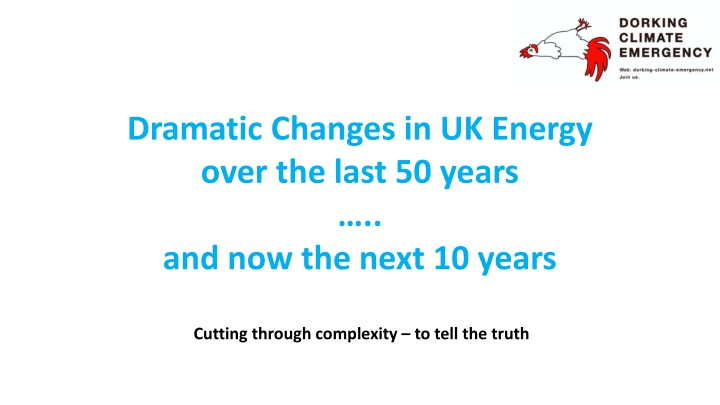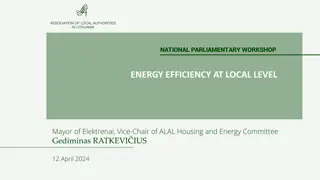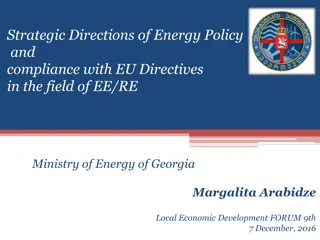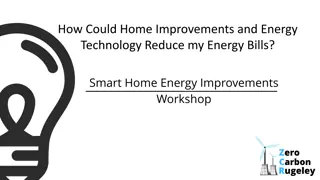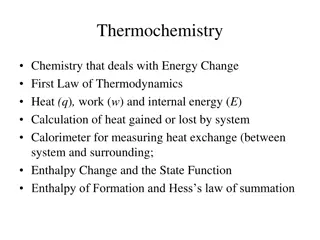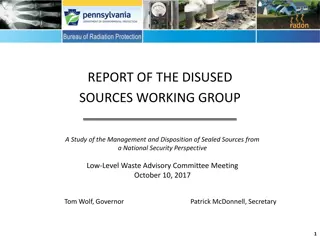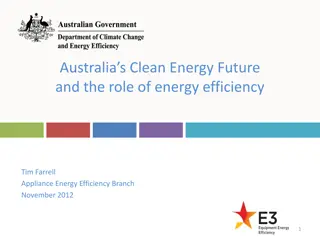Dramatic Changes in UK Energy Sources Over 50 Years
The evolution of UK energy consumption and sources over the past 50 years reveals significant transformations towards low-carbon alternatives. While natural gas has replaced coal substantially, renewables like wind and solar still contribute minimally. The UK aims to add 30GW of offshore wind electricity by 2030, targeting a reduction in fossil fuel dependency. Additionally, the impact of electric vehicles on carbon emissions varies based on the electricity grid they're charged with, highlighting the complexities in achieving sustainable transportation solutions.
Download Presentation

Please find below an Image/Link to download the presentation.
The content on the website is provided AS IS for your information and personal use only. It may not be sold, licensed, or shared on other websites without obtaining consent from the author.If you encounter any issues during the download, it is possible that the publisher has removed the file from their server.
You are allowed to download the files provided on this website for personal or commercial use, subject to the condition that they are used lawfully. All files are the property of their respective owners.
The content on the website is provided AS IS for your information and personal use only. It may not be sold, licensed, or shared on other websites without obtaining consent from the author.
E N D
Presentation Transcript
Dramatic Changes in UK Energy over the last 50 years .. and now the next 10 years Cutting through complexity to tell the truth
How UK Energy Sources have changed since 1972 2.1 Zero & Low Carbon 1.2 Million tonnes of oil equivalent (Mtoe) per year Million tonnes of oil equivalent (Mtoe) per year What this tells us: Natural gas has substantially replaced coal. A phenomenal change. Renewables (wind/solar) has increased but it is still tiny. Lots more to do. Bioenergy (biomass/biomethane, etc) is the large part of renewables. But is combusted. Is that really green? Population has increased by 20% and total energy sources used have reduced by 5%. ie. Improved efficiencies. Fossil fuels (natural gas, coal, petroleum, oil) still make up 79% of total energy sources used in 2019. UK is very dependent upon imports for its total energy sources (see page 8).
How UK Energy Consumption has changed since 1972 0.7 Million tonnes of oil equivalent (Mtoe) per year Million tonnes of oil equivalent (Mtoe) per year What this tells us: Transport fuels have increased significantly and are now a primary air pollution and emissions problem. Industry has depleted dramatically. In effect UK has outsourced manufacturing to other countries and then treats this as a scope 3 emission (ie. a consumption-based emission), which is not counted for net-zero targets. Conversion losses have increased (mainly due to increased use of electricity; gas/nuclear/grid losses) Primary fuel production/extraction (mainly coal) in 1972 required significant energy. Population has grown by 20% and domestic electr/heating has increased 14%. So little efficiency improvement.
UK Government Commitment 1 (Nov 2020): Addition 30GW of Offshore Wind Electricity Capacity by 2030 UK Onshore wind in 2020: 13.6 GW capacity (incl. projects under construction) typical load factor: 26% UK Offshore wind in 2020: 10.4 GW capacity (incl. projects under construction) typical load factor: 38% Total generation in 2019: 65,657 GWh per annum. Source: RenewableUK; UKWED Database. Load factor is the % of the full rated capacity of the wind turbines that is turned into energy per year. 22.6 Mtoe additional electricity (million tonnes of oil equivalent) ie. Displacing around 14% of the fossil fuel Energy used for transportation and Natural Gas. Albeit source-to-wheel efficiency of Electric Vehicles (EV) is much better then well-to-wheel efficiency of internal combustion engine vehicles.
Electric Vehicles are not Zero Carbon (Commitment 4) Only upto 53% lower carbon even when charged with 100% renewable electricity. tonnes CO2 equivalent End-of-life Driving use phase Manufacturing Batteries Materials Conventional Petrol Vehicle (medium size; good efficiency) EV charged with global grid mix of electricity EV charged with EU grid mix of electricity EV charged with 100% renewable electricity Source: Polestar; 2020 (representative of typical medium sized EV) 13% less CO2 27% less CO2 53% less CO2
UK Government Commitment 7 (Nov 2020) : 600,000 heat pumps per year to 2028 Heat pumps need 100% green electricity to power them and need properties to be highly insulated, to approach zero carbon for the heating of properties. Average medium sized property uses 12,800 kWh of heat. Let s assume better insulation reduces that to 8,900 kWh 600,000 heat pumps per year to 2028 is just 15% of UK household properties. Typical air source heat pump needs 1kWh of electricity to make 3.2 kWh of heating output. electricity So will require 12,000 GWh of renewable electricity to power the 600,000 per year heat pumps 1 unit Typically 3.2 units That is another 1 Mtoe (Million tonnes of oil equivalent) of renewable electricity generation needed.
CONCLUSIONS Further significant change to the UK s energy system is still needed But technology alone will not lead to net zero carbon UK Government policy is fixated on technology to solve the problem All this new technology needs an expansion well beyond another 30GW of offshore wind energy Significantly more localised renewables is needed (ie. less losses) Significantly enhanced thermal insulation standards are needed now, not after year 2025, in order to support the heat pump commitment Our consumption-based emissions are significant and need a major change in the way we consume and the way we live Electric Vehicles do not change carbon emissions to zero.
Data: ! ! (Sankey diagram) Electricity Production in 1972 was 17.7 Mtoe versus in 2019 was 29.6 Mtoe. ie. has already increased 67%. In 2019: 54% of natural gas is imported into UK. 75% of coal is imported into UK. 62% of petroleum/oil is imported into UK. 28% of bioenergy is imported (mainly biomass for combustion).
UK Data: UK Energy Flow Chart 2019 (Million tonnes of oil equivalent) Primary
